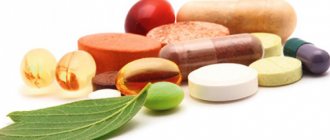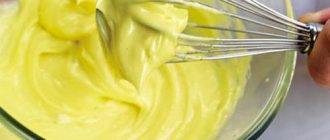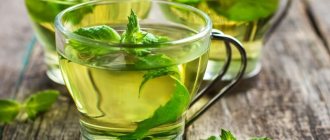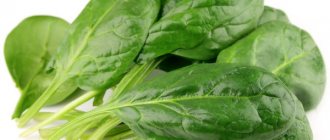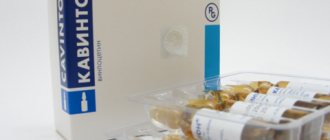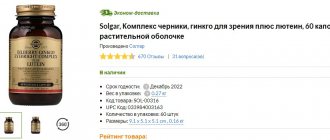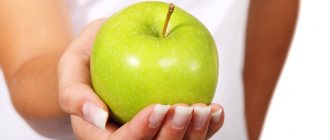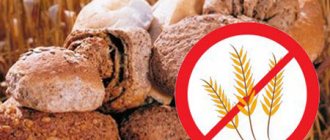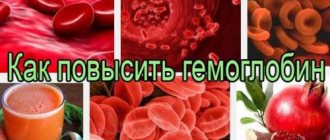Why is diet so important for varicose veins?
By following a diet, you can restore normal blood flow, reduce the load on damaged vessels, and cleanse the body of accumulated toxins. It must be observed in any case of varicose veins, regardless of whether it concerns only the legs or affects the pelvic organs. The diet is used at the first signs of a pathological condition of blood vessels as a preventive measure, and when surgery is prescribed - as an important component of pre- and postoperative therapy.
In order to properly develop a dietary regimen, the doctor takes into account various characteristics of the patient’s body: his age, weight, hereditary diseases, allergic sensitivity, health status, as well as the specifics of his lifestyle. However, any diet for varicose veins is based on general principles that allow you to avoid relapses and complications of the disease.
Vein Health Products
Now let's focus on the most important products for varicose veins of the legs.
Mandatory products - vegetables, berries, fruits
Of course, the first thing you should do is include fresh vegetables, fruits and berries in your diet against varicose veins. Of the fruits and berries, brightly colored ones are especially useful: citrus fruits, sea buckthorn, rose hips, persimmons, blackberries, blueberries, cherries, currants, raspberries, gooseberries, wild strawberries, strawberries, blueberries, lingonberries, cranberries.
For varicose veins, vegetable products are required: zucchini, cucumbers, leafy and spicy greens, any cabbage, young corn, green beans, peas, pumpkin, tomatoes, bell peppers, carrots, etc. Soybeans and products made from it are also useful: legumes are rich not only protein, but also vitamin E, which promotes the firmness and elasticity of veins and is very necessary for varicose veins of the legs.
Among winter products for varicose veins, frozen berries and vegetable mixtures are suitable, preferably locally produced.
Fermented milk products for varicose veins
Low-fat fermented baked milk, natural yogurt, kefir, yogurt, cottage cheese, Varenets and other fermented milk products. It is better to remove whole milk.
Cereals are a must in the diet
Whole grains: for varicose veins of the legs, the priority is buckwheat, oatmeal and barley, but large wheat and pearl barley, brown rice with the addition of wild and spelt are also useful. Cook porridges from them in water, season with vegetable oil (ghee can be used), add honey, dried fruits (dried apricots, prunes, figs, dates) and nuts (hazelnuts, pine nuts, walnuts, almonds): you get a food rich in fiber, minerals and antioxidants. Many nuts are rich in rutin (vitamin P), which strengthens capillary walls and improves blood flow, preventing blood stagnation in the veins. But you shouldn’t eat fried or salted nuts - only raw ones, as fresh as possible: stale nuts will cause harm, not benefit.
Protein in the diet for varicose veins of the legs
Naturally, proper nutrition for varicose veins of the legs should contain a lot of protein and healthy (unsaturated) fats, so different fish are suitable: low-fat (pollock, flounder, navaga) and fatty (salmon, halibut, herring, sardines, etc.). Among the seafood products rich in copper, zinc and iodine - minerals that strengthen the walls of blood vessels, squid, mussels, shrimp are useful, and it is generally advisable to add seaweed to many dishes: salads, casseroles, solyankas, soups, baked goods. There are fewer calories, but there is a lot of natural sodium - you can easily do without salt.
If you have varicose veins in your legs, pay attention to river fish, such as carp, carp, burbot, catfish, and perch.
Mustard wraps for weight loss and cellulite
But take lean meat (veal, poultry without skin), do not neglect offal (liver, kidneys, tongue, heart). And prepare low-fat jellied meat from pork and beef legs, tails and ears: gelatin is very useful for varicose veins - because it strengthens the joints and the legs can withstand stress more easily.
Research in recent years has shown that vascular elasticity may decrease due to a lack of vitamin D, which is not very abundant in food. However, in addition to fish and seafood, chicken yolk and egg powder, chicken and quail eggs (just don’t get carried away with them too much), the already mentioned ghee (clarified butter), some mushrooms (morels, chanterelles) and 50% cheese (cheddar and Swiss).
Focus on vegetable oils
Vegetable oils should make up the majority of fat in the diet. Olive and flaxseed are considered the best, but sunflower, corn, mustard, sesame, soy, nut, etc. are also useful.
Diet goals for varicose veins
The list of goals that the doctor and patient sets for themselves when prescribing a diet includes:
- Reduce blood viscosity to improve its trophic properties and lower blood pressure.
- Strengthen blood vessels to prevent the worsening of varicose veins and create the prerequisites for its successful treatment.
- Relieve swelling, but at the same time provide the body with the fluid it needs.
- Getting rid of excess weight, in the presence of which it is almost pointless to fight varicose veins.
Prohibited Products
To overcome the disease, you will have to stop eating certain foods. First of all, you need to exclude fried and smoked foods from your diet. The same goes for hot seasonings. This ban is explained by the fact that the use of the above products increases blood viscosity, and this can lead to blood clots.
As for salt, opinions on the use of this spice are ambiguous. If it is present in dishes in moderation, it will help slow down the removal of fluid from the body, which is not so bad. However, in cases of venous insufficiency, salt intake should be kept to a minimum, as this can cause edema.
The list of prohibited foods also includes rich broths, stews, canned food, and pickled dishes. It is necessary to sharply limit meat (beef and pork), replacing it better with beef liver, lamb kidneys or seafood, which will enrich the body with copper, which will increase the elasticity of blood vessels. You also need to give up alcoholic drinks.
Fried foods and alcohol can provoke varicose veins or aggravate the disease if it has already manifested itself.
Patients suffering from excess body weight need to control the caloric content of food consumed. To speed up the burning of the fat layer, it is worth increasing the consumption of avocados, lettuce, cucumbers, water with lemon, grapefruit juice, celery, and apples.
It is worth limiting baking, confectionery, and sweets. You should also limit, or better yet eliminate, coffee. You can replace it with tea with chestnut honey. This drink also has a tonic effect on the body.
What products will be useful in the treatment of varicose veins?
Despite the limitations, the correct approach to organizing a diet for varicose veins allows you to provide the body with all the necessary substances. Thus, following the diet rules does not lead to any gastrointestinal problems.
- Products with plant fiber. They are carbohydrates that are broken down gradually and without fat deposition. When consuming fiber, there are no spikes in insulin levels, energy is released slowly and continuously;
- Water - drink about 2-2.5 liters per day, pure and in juices, tea, etc.;
- Dried fruits - can thin the blood and replace sweets in the diet;
- Spices – curry, thyme, turmeric, ginger. In addition to taste, they contain unique active plant substances that improve blood properties.
- Legumes and nuts are rich in tocopherol (vitamin E) and easily digestible plant proteins.
- Algae - contain minerals necessary to strengthen blood vessels.
- Berries and fruits are sources of vitamin C; some (raspberries, cherries) can increase hemoglobin levels, which is useful for cellular respiration.
- Seafood is one of the few sources of omega-3 unsaturated fats, which promote the resorption of cholesterol plaques and are necessary for maintaining a healthy immune system.
- Sprouted wheat is a useful product for cleansing the body, rich in amino acids, fatty acids and vitamins.
What to eat
A balanced diet for varicose veins in the legs is required to strengthen the walls of blood vessels, reduce excess weight, improve metabolic processes, and improve blood quality. It is also important to increase the body’s immune forces.
Products for varicose veins should enrich the body with the required vitamins and nutrients. You need to eat food that contains:
- vitamins C, E;
- bioflavonoids;
- vegetable fiber;
- Omega-3 fatty acids;
- copper, silicon, zinc and other elements.
Important information: Is it possible to exercise on an exercise bike if you have varicose veins (varicose veins) of the lower extremities (legs)
These elements eliminate varicose veins; A diet for varicose veins allows you to eat a balanced diet and significantly improves your health.
Products
Useful products for varicose veins are as follows:
- Vegetables, herbs, fruits and berries. They contain many useful substances: vitamins, micro- and macroelements, etc. Products are necessary for the normal functioning of all internal systems of the body.
- Dietary meat and fish. The diet should include lean meat: chicken, rabbit, veal, turkey, etc.; river and sea fish. Dishes from them should be prepared in a gentle manner, adding salt in a minimal amount.
- Cereals. The best option is oatmeal or buckwheat porridge. The fiber they contain improves digestive processes and nourishes the body with the necessary elements.
- Dried fruits. These products, which thin the blood for varicose veins, have a positive effect on the health of the veins.
- Seafood. They contain Omega-3 fatty acids, which are essential for the human body, especially women.
- Nuts. The composition includes a large amount of vitamin E, which increases the elasticity of blood vessels.
- Sprouted grains. Grains improve the functioning of the gastrointestinal tract, normalize stools, help remove toxins and toxic substances from the body, and are a source of various vitamins.
- Legumes. Plants from the legume family help improve vascular health.
- Ginger and thyme. These products improve blood quality and help thin it.
- Honey. Has a general strengthening effect. In nutrition for varicose veins, honey replaces sweets and can be consumed with cereals and drinks.
Beverages
Drinking plays an important role in the diet for varicose veins on the legs. The liquid prevents the blood from thickening, improves blood flow, and prevents the development of stagnant processes in the vessels. However, not all drinks have a beneficial effect on the body.
Clean drinking water has the best effect on the blood. You need to drink at least 1.5-2 liters of liquid per day (calculation - 30 mg per 1 kg of body weight).
Green tea, ginger-based infusions, herbal infusions, freshly squeezed juices, compotes, and fruit drinks also have a positive effect. Due to the beneficial elements they contain, they have a beneficial effect on the body. However, the above required amount of fluid with proper nutrition for varicose veins applies only to clean water. Other drinks are drunk in excess of this norm.
Important information: How to treat varicose veins of the pelvic organs in women and symptoms of internal varicose veins
What foods should be excluded from the diet for varicose veins?
Some foods negatively affect the composition of the blood, which invariably affects blood vessels. Those prone to varicose veins can suffer significantly from their use.
Therefore, they are strictly prohibited, especially in severe forms of the disease.
- Alcohol.
- Fat-rich foods.
- Sugar and other light carbohydrates.
- Black tea and coffee
- Canned food
- Meat broths
- Smoked products.
As you can see, the list of prohibited products is much shorter than the recommended ones. Even if you have to give up especially favorite treats, you can replace them with new ones that are beneficial for the body. Improving your health and eliminating the symptoms of varicose veins will give you lightness and pleasure that exceeds the usual effect of sweets, smoked foods, alcohol and any other product harmful to varicose veins.
How to eat healthy
With varicose veins, the blood becomes viscous, blood flow is disrupted and the walls of blood vessels narrow, as a result of which the veins swell and begin to bulge under the skin of the legs. This disease is dangerous because it can lead to the formation of blood clots, which can be fatal. Varicose veins usually affect overweight people, pregnant women and those who engage in heavy physical labor or sedentary work.
Therefore, proper nutrition for varicose veins should be combined with moderate exercise. This will help not only in the treatment of varicose veins of the lower extremities, but also effectively for its prevention.
The emphasis in the diet is on foods that thin the blood and strengthen the walls of blood vessels. Also, an important task is to remove toxins from the body and lose weight. This will help:
Various foods rich in antioxidants and flavonoids. For example: blueberries, black currants, grapes and strawberries contain very large amounts of these substances, and also stimulate the cardiovascular system. Pomegranate also helps in the fight against blockage of blood vessels and high cholesterol levels. The highest content of antioxidants is found in the skin of the pomegranate, so it is better to eat fresh pomegranate rather than its juice. Beneficial flavonoids are found in apples and citrus fruits (lemons, grapefruits, oranges). Apple cider vinegar or lemon juice can be used to dress salads.- Onions and garlic help thin the blood.
- Avocado is an excellent helper in the fight against varicose veins. This fruit contains a large amount of vitamins C and E, as well as glutathione, a substance that strengthens the entire cardiovascular system. Other sources of vitamin C include: kiwi, sweet peppers, rose hips, sea buckthorn and celery.
Various foods rich in antioxidants and flavonoids. For example: blueberries, black currants, grapes and strawberries contain very large amounts of these substances, and also stimulate the cardiovascular system. Pomegranate also helps in the fight against blockage of blood vessels and high cholesterol levels. The highest content of antioxidants is found in the skin of the pomegranate, so it is better to eat fresh pomegranate rather than its juice. Beneficial flavonoids are found in apples and citrus fruits (lemons, grapefruits, oranges). Apple cider vinegar or lemon juice can be used to dress salads.- Onions and garlic help thin the blood.
- Avocado is an excellent helper in the fight against varicose veins. This fruit contains a large amount of vitamins C and E, as well as glutathione, a substance that strengthens the entire cardiovascular system. Other sources of vitamin C include: kiwi, sweet peppers, rose hips, sea buckthorn and celery.
- The diet for varicose veins of the legs should contain foods rich in fiber - these are raw vegetables and fruits. Apricots, dates, pears, plums, cabbage, peas, celery are real treasure troves of fiber. It helps reduce cholesterol levels in the blood, which has a beneficial effect on the functioning of the heart. Fruits and vegetables also contain various vitamins and microelements necessary for our body. Therefore, they must be constantly present in the diet, and if this is not possible, then you need to take vitamin complexes.
- Fruit and vegetable juices will also be beneficial. Especially with varicose veins of the legs, juice from carrots, spinach, grapes and tomatoes will help.
- Greens (sorrel, lettuce, dill, parsley). It can be added to salads or cooked cabbage soup and okroshka. They help thin the blood.
- Daily consumption of cereals. For example, rice porridge removes salt from the body, and buckwheat contains a lot of rutin, which regulates blood flow.
Foods high in copper: pork liver, peanuts, hazelnuts, walnuts, beans, peas, and seafood.- Sea kale is rich in copper and antioxidants.
- Asparagus strengthens the walls of blood vessels.
- Vegetable oil (olive, sunflower) contains vitamin E and is a necessary component in the formation of blood vessels.
To treat varicose veins in the lower extremities, you need to avoid foods that contain a lot of cholesterol and have a negative effect on the liver. Liver dysfunction primarily affects blood flow in the legs.
You can hang a list in your kitchen “What you can’t eat if you have varicose veins”; it should contain the following products:
- salt, which negatively affects the condition of blood vessels and dehydrates the body. Be sure to reduce its consumption;
- bakery products. You cannot completely give up bread, but you can, if possible, reduce the amount of bread in your diet. It is better to replace white bread with gray bread;
- fermented foods and pickles contain practically no nutrients;
- fatty and fried foods. Fat increases cholesterol and the risk of blood clots;
- spicy foods and seasonings;
- canned and smoked foods;
- strong black tea and coffee;
- sweets. Instead of sweets, you can eat jam or dried fruits;
- Avoid drinking beer, which has a diuretic effect and leads to dehydration;
- Cow's milk should be drunk in moderation, as it hardens the blood vessels.
Nutrition secrets
For many people, just the word “diet” implies strict restrictions and an ordeal of willpower in an attempt to do without their favorite foods. But those who tried the diet for varicose veins discovered many new and varied dishes with excellent taste.
To improve the taste, benefits and balance of dietary dishes, try following these tips:
- Combine salads made from foods rich in retinol and beta-carotins with vegetable oil. These vitamins are fat-soluble and are much better absorbed dissolved in oil.
- Okroshka and green soups (cabbage soup) are both nutritious, thirst-quenching and cooling dishes, indispensable in the hot season.
- Add a product such as beef liver to your diet. The liver makes an excellent pate if you boil it with vegetables and grind it in a meat grinder with spices and vegetable oil.
- Try to eat a variety of cereals every day. Any well-cooked porridge is perfectly absorbed by the digestive system, has a beneficial effect on intestinal function, satisfies hunger and the body’s need for complex carbohydrates.
- Do not overeat, as acetylcholine receptors, which transmit the feeling of hunger, are saturated in about half an hour. Stop eating before you feel full - your body will feel satisfied later.
- Try a wide variety of herbal teas. You can brew the leaves and flowers of many plants: linden, mint, lemon balm, thyme, raspberry, etc. Each of them has its own unique taste and beneficial properties. If you have the opportunity to grow raw materials for tea in your own flowerbed or go to ecologically clean forests and plantings to get it, then you can be absolutely sure of their benefits.
Healthy foods
Each product, due to its composition, has a certain effect on the body. Let's find out what foods you need to eat to strengthen blood vessels, improve blood circulation and prevent blood clotting.
To make your blood less thick, you need to drink more of the following drinks:
- fruit drinks;
- jelly;
- green tea;
- tea and fresh currant leaves.
Okroshka, jelly and green cabbage soup have the same effect.
You can strengthen the walls of veins and restore their elasticity by using:
- Seafood (mussels, shrimp, squid, crabs, oysters). They contain a huge amount of copper, which helps increase protein production. As a result, the vessels become more elastic and durable.
- Sea kale. It also contains a lot of copper. Therefore, it is recommended to eat it daily. In addition, it is rich in flavonoids, which help strengthen the vascular wall, reduce its permeability, and increase the elasticity of red blood cells.
- Vegetable oils. They can be used to dress vegetable salads. Especially healthy are pumpkin, sunflower, and olive. They contain a lot of vitamin E, which normalizes the process of stretching veins and returning them to their previous state due to elasticity.
- Beef liver.
In case of varicose veins, it is very important to prevent blood thickening, which can result in thrombus formation. This can be done by eating garlic, onions, cherries, red currants, citrus fruits, especially lemon. Apple cider vinegar has the same property. It can be used for dressing vegetable salads, and you can also drink the solution twice a day, preparing 2 tbsp. spoons in half a glass of water.
You should also include in your daily diet foods that prevent the development of constipation. These include black bread, plums, apples, prunes, figs, kefir, yogurt, bran bread, carrots, beets, dried apricots.
It is important that the diet is varied, but made up of healthy foods
If you have varicose veins, you must eat cereal porridge. They saturate the body with useful substances, speed up metabolism, and remove salts. It is especially useful to add natural honey to them. It is recommended to eat rice, buckwheat, semolina, and rye porridge.
Diet for varicose veins
The nutritional rules provided for by the diet include not only recommendations and prohibitions on certain foods, but also ways of consuming them. The list of basic rules of diet for varicose veins is small, but each of them should be strictly adhered to.
- Don't forget about breakfast. Every morning, the body should receive approximately half of all carbohydrates and proteins for the day, so a sandwich with coffee is not considered a complete breakfast. Prepare a normal meal, and if you have no appetite, try waking up half an hour earlier.
- Eat small and often. Divide the usual three meals a day into at least 5 meals in order to evenly load the digestive and circulatory system.
- Don't eat before bed. No food after 18 hours, and especially before bedtime. In addition, you will immediately feel the desire to have breakfast.
- You should not drink while eating. Do not wash down food with water, so as not to dilute gastric juice.
Beverages
It is worth noting that nutrition for varicose veins and vascular disease involves drinking a sufficient amount of liquid. This is necessary to prevent blood thickening, as this factor increases the chances of blood clots and slows down blood flow. It is recommended to drink more natural juices, fruit drinks, and still mineral water.
It is especially important to adhere to the drinking regime during the hot period, because at this time the body loses a lot of moisture. You should not neglect this rule if you are constantly in a room where the air conditioner is running. This device dries the air.
But you should avoid alcoholic drinks, as they cause blood vessels to dilate, which leads to a slowdown in blood flow. Coffee also affects the condition of our body in the same way, so it is better not to drink such drinks.
Drinking for varicose veins
If you follow the rules of the diet, the body gradually begins to cleanse itself. To ensure this process, it is necessary to increase the consumption of water necessary for the operation of the excretory system.
During the diet, pay special attention to the quality of water consumed. Tap water purified by boiling is too hard - this can be easily checked by observing the appearance of scale on the inside surface of the kettle. It is difficult to cleanse the body with such water, so you will have to purchase specially purified or mineral water, or collect it from proven sources (spring, well, etc.)
Drinking high-quality water will have a beneficial effect on the functioning of the gastrointestinal tract, the condition of the skin, hair and nails, and will also improve blood composition and overall well-being.
What are varicose veins
Varicose veins are called swollen veins due to poor blood circulation and stagnation. The veins become swollen, clearly visible on the surface of the skin, and acquire a bluish tint.
Gradually, nodular formations appear, valve flaps are destroyed or completely closed, which
disrupts natural blood flow .
Varicose veins are often accompanied by unattractive spider veins and bulging veins . According to statistics, every fourth person on the planet suffers from this pathology. The main causes of varicose veins are:
- genetic predisposition;
- disturbances in the functioning of the endocrine system;
- regular stress, nervous disorders;
- circulatory disorders due to pathological formation (thrombus, tumor).
Very often, varicose veins are an “occupational” disease among those who, due to their profession, are forced to be on their feet for a long time (for example, salespeople, flight attendants, waiters) or, conversely, employees who spend their working hours in a sitting position (primarily office workers).
Example of a diet menu for varicose veins
Many patients find it difficult to follow all the rules of diets because they do not create their own nutrition plan. There are not so many foods that are prohibited for varicose veins, so this plan is quite simple to draw up. Every day you can change the products you use to ones of similar composition to diversify the menu.
For example, we offer several dietary menu options for varicose veins:
- First option:
- First meal at 7 am: breakfast consisting of vegetable salad with porridge.
- Second - at 10 am: raisins (50-100 g) with herbal tea.
- The third is lunch, at about one o'clock in the afternoon: for the first course, soup in chicken broth with green peas, for the second - boiled fillet of sea or red fish with vegetables.
- Fourth – dinner, at four o’clock in the afternoon: salad with seaweed.
- Fifth meal - second dinner, at six o'clock in the evening: low-fat yogurt with fruit salad.
- Second option:
- Breakfast: cheese with tomato on black bread, washed down with ginger tea.
- Afternoon snack: yogurt with berries.
- Lunch: pumpkin soup, baked fish with mashed potatoes.
- Dinner: steamed red fish with green vegetable salad.
- Second dinner: natural apple and carrot juice with pulp.
- Third option:
- Breakfast: cottage cheese with nuts and dried fruits, bread and natural fruit juice.
- Afternoon snack: apple baked in honey with nuts.
- Lunch: lentil soup, porridge with steamed meatballs.
- Dinner: boiled chicken or turkey breast, rye bread and compote.
- Second dinner: grain bread with tomato juice.
Sunday:
- breakfast: oatmeal with berries and yogurt;
- lunch: vegetable salad with herbs, steamed turkey, ginger tea;
- lunch: vegetable broth, porridge, celery;
- in the afternoon, have a fruit salad of bananas, nuts and orange;
- and on the last day, have dinner with peppers stuffed with rice, garlic and herbs.
It is better to start treatment of any disease from the onset of the first symptoms. Therefore, if you have pain and inflammation of the veins in your legs, you need to consult a specialist. A diet for varicose veins will help cope with blood thickening, weakening of blood vessels, and improve overall health.
DO YOU STILL THINK THAT IT IS IMPOSSIBLE TO GET RID OF VARICOSE VARICOSIS!?
Colored diet
One of the modern fashion trends in nutrition is the colored diet. It is based on daily changing the diet of plant foods based on their color. The theoretical justification for this diet is that the colors of vegetables and fruits mean the presence of certain beneficial substances necessary for blood vessels. Eating foods of the same color every day is more convenient for the digestive system, which specifically secretes enzymes for the complete absorption of complex substances of the same type.
For example, fruits acquire yellow and orange shades thanks to beta-carotenes - a whole family of pigments and B vitamins. Blue and purple colors are due to the high content of fucoxanthins. Greens rich in chlorophyll are known for their high concentration of micronutrients such as calcium, magnesium, potassium, etc. Red berries, fruits and vegetables contain the most vitamin C.
The effectiveness of the colored diet has been confirmed in practice, due to which it is constantly recommended by many nutritionists as the most rational way to saturate the body with vitamins and minerals of plant origin.
Author of the article:
Kuzmina Vera Valerievna |
Endocrinologist, nutritionist Education: Diploma of the Russian State Medical University named after. N.I. Pirogov, specialty “General Medicine” (2004). Residency at the Moscow State Medical and Dental University, diploma in Endocrinology (2006). Our authors
Types of diets
If the patient exhibits signs of venous insufficiency, dilated vessels are visualized, then the doctor prescribes a strict diet for this period.
The first 4 days are the most difficult, when you are allowed to eat only vegetables and fruits, boiled or raw. If you are preparing a salad, you can season it with a few tablespoons of vegetable oil with lemon and vinegar.
On the 5th day, dried bread is added, then mashed potatoes with milk, in the next 2 days - milk, boiled egg. Days 10-13 are supplemented with cottage cheese, days 14 – buckwheat or rice porridge with milk. On the last day, you can add beef to the menu.
These measures are necessary in order to relieve the acute period of the disease and move on to remission. When such a strict diet crosses the threshold of 25 days, you can use the entire list of permitted products.
Prohibited Products
First of all, you need to know prohibited foods that contribute to complications: blood clots and vascular inflammation.
This is the following list:
- spicy, salty, pickled dishes;
- sweets (chocolate), flour products;
- soup with strong broth;
- fatty meats;
- high fat dairy products;
- some fruits (bananas, mangoes, pomegranates);
- coffee.
As you can see from this list, some items are the other side of the coin, that is, products that are included in the recommended category with a certain reservation. For example, cream and sour cream contain protein, but at the same time they have a high fat content, so they are taboo.
A person undergoing treatment for varicose veins should pay attention to the calorie content of foods. Food must correspond to the body's needs and physical activity.
Forbidden food
The diet for varicose veins clearly defines which foods are prohibited. It is important to strictly follow these recommendations, since unhealthy food can cause significant harm to your body, causing a number of serious complications.
Read on topic: 10 reasons to go on a diet
The main list of what you should not eat if you have varicose veins includes:
- fatty and rich broths, jellied meat;
- smoked meats;
- salo;
- canned food and semi-finished products;
- pastries, pastries, cakes, chocolate;
- seasonings with increased pungency.
Many patients are also often interested in which wine is beneficial. In fact, alcoholic drinks in any form are contraindicated for anyone who has varicose veins or any other pathologies of the cardiovascular system.
Drinking coffee with varicose veins is also undesirable. However, it is still better to check with your doctor whether you can drink coffee. The reason is that coffee drink for varicose veins has different effects on the bodies of different people. In some cases, caffeine may even be beneficial.
Often patients are also concerned about whether they can drink chicory. The reason is that this drink is often used as an alternative to coffee for hypertension. But still drinking chicory for varicose veins is prohibited.
Why can’t you drink chicory if you have varicose veins? The answer is very simple - this drink expands the lumen of blood vessels, thereby increasing the load on the lower limbs. The main task of nutrition for this disease is to increase the tone of the vascular wall, which explains why chicory should not be consumed for varicose veins.
However, it is still recommended to further clarify with the doctor what is not allowed for varicose veins, since some products may simply be incompatible with the prescribed treatment, or the patient may have an additional pathology that prohibits the use of a certain product.
How does nutrition affect the occurrence and treatment of varicose veins?
The diet for varicose veins and thrombophlebitis of the lower extremities is agreed with the doctor. The type of therapeutic nutrition depends on the nature of the disease and the characteristics of the body.
The diet does not include foods that can cause an allergic reaction or aggravate the course of varicose veins. For thrombophlebitis and varicose veins, a salt-free diet is recommended.
The doctor advises enriching the diet with vegetables, fresh and baked fruits, and cereals. For varicose veins, you can eat buckwheat, rice, and wheat porridge. Drinking plenty of fluids is recommended.
When it comes to diets, there are many of them. The goal of therapeutic and preventive nutrition for varicose veins is to restore the tone of blood vessels and reduce pressure on the veins of the lower extremities.
Before starting the diet, it is recommended to fast: you need to drink juices for one day. It is advisable that they be freshly squeezed and diluted with water.
If you have enough strength and energy, the fast can be extended for 3 days.
Many people are afraid of such restrictions. There is an alternative option - a fruit day, in which the juice is replaced with apples, boiled pumpkin, apricots, and bananas. Gradually you need to switch to a standard diet. The maximum duration of a fruit diet is 4 days.
If you have varicose veins, you should include nuts and cereals in your diet. The basis of nutrition is vegetables and fruits (raw or heat-treated). Varicose veins require many dietary restrictions. Excluded from the diet:
- dishes seasoned with spices;
- black tea (it is better to give preference to green);
- butter cookies, cakes, rolls.
- coffee drinks;
- any spicy, salty, pickled, fried foods.
It includes vegetables and fruits of different colors. A diet of this type is a good release for the body. Fruits and vegetables contain a set of microelements that are necessary to strengthen blood vessels. Therapeutic and preventive nutrition also helps cleanse the body. For varicose veins you can use:
- eggplant;
- tomatoes;
- cucumbers;
- pumpkin;
- apples;
- bananas;
- stewed cabbage;
- potato.
Vegetables and fruits contain not only vitamins, but also calcium and magnesium. These microelements increase vascular tone. You can include cereals in your diet. As for drinks, the most useful is rose hips for varicose veins. You can cook compote or jelly based on cranberries, black currants, and gooseberries. For varicose veins and thrombophlebitis, watermelon is not prohibited; you can eat melon.
The diet involves many rules. You can't eat before bed. Eating once a day will disrupt your metabolism, even if it consists of the right foods. The last meal should be three and a half hours before bedtime. If you have varicose veins and thrombophlebitis, it is not advisable to drink milk. This product disrupts the elasticity of blood vessels, making it more difficult to overcome the disease. If milk is consumed frequently, the veins will become hard, resulting in venous congestion.
It is recommended to eat salads made from fresh vegetables. You should use oil as a dressing, not mayonnaise or any sauce. As for spicy dishes, there are also restrictions. It is better not to add pepper to salads. Light salads will help cleanse blood vessels, which is very important for varicose veins.
It is not advisable for a person with this disease to overeat. Before eating, it is recommended to fill your stomach by drinking a glass of water. After this, you can start eating. It is important to consider product compatibility. Milk, cheese, cottage cheese do not go well with fish and chicken. Peas are not eaten with mushrooms.
Melon is poorly digestible if consumed with honey.
For varicose veins, tea based on mint, chamomile, lemon balm is recommended: you can drink up to 1.5 liters per day. If you wish, make tea from currant leaves.
Regular consumption of refreshing drinks saturates the body with useful components and thins the blood. For varicose veins, you can cook okroshka.
If we consider soups, lighter ones are shown, with the addition of greens (sorrel, spinach). Fatty broths are prohibited: they clog blood vessels.
For varicose veins and thrombophlebitis, pastries and cakes are prohibited. Not everyone can give up sweets, but you should still listen to the advice of nutritionists and eliminate sweets from your diet. It is recommended to replace chocolate with nuts.
For varicose veins and thrombophlebitis, porridges are recommended, especially buckwheat and wheat. These cereals contain fiber, which increases vascular tone. By consuming rice in moderation, you can get rid of salts that have accumulated over a long time. Wheat grain helps remove unnecessary fat.
Buckwheat improves blood composition. Semolina porridge normalizes metabolic processes.
This disease often occurs in people who have a poor diet. It is important to follow a diet! If you break your diet with varicose veins or any other disease, serious digestive disorders will occur.
People with gastrointestinal problems are prone to varicose veins. The body must not be allowed to become polluted. The digestive system is capable of accumulating waste products, especially with poor nutrition.
You should eat foods that improve metabolism.
Slagging leads to the fact that particles of food waste begin to accumulate in reserve depots. The latter are designed to store useful substances. If necessary, the body begins to consume these substances.
The supply of nutritional components available in the reserve depot helps fight viral and infectious diseases. The body should not accumulate toxins instead of substances that are beneficial to it. Otherwise, there will not be enough strength to fight the disease. Slagging is a predisposing factor to disease.
Varicose veins and thrombophlebitis often occur in overweight people. Remember the important rule - you need to eat regularly, but in small portions!
There are so-called “fashion diets”. They should not be confused with medicinal ones. The second involves proper, balanced nutrition: the doctor selects products that improve metabolism and saturate the body with nutrients.
It is worth noting that some foods may enhance or weaken the benefits of others. A proper combination of foods helps improve the absorption of nutrients. To learn the basic principles of nutrition, you need to consult a nutritionist.
Follow the specialist's recommendation: consider the number of calories you need.
As we have already said, fruits and vegetables are beneficial for varicose veins. They can be fresh or baked. If this illness occurs against the background of a gastrointestinal tract disease, you should give preference to baked vegetables and fruits. Raw ones can irritate the stomach mucous membranes. For varicose veins, vitamins may be prescribed.
To cope with this disease, you need to remove accumulated toxins from the body. Particles of waste often enter the circulatory system, resulting in varicose veins. You need to periodically cleanse your body. Fasting days on juices are useful.
Such days are held once a week, not more often. On a fasting day or any other day, you should consume no more than 1.5 liters of liquid per day. Excess water is also harmful: in this case, the kidneys are under greater strain.
For varicose veins, you can drink 200 ml of water every 3 hours.
The products must go well together. Experts advise eating 5 times a day, and the portions should be small. Thanks to this principle of nutrition, toxins and waste will be eliminated in a timely manner. Fractional meals are useful for any ailment.
It is very important to avoid fried, pickled, smoked and salty foods. Stewed and boiled dishes are recommended. The meat should not be fatty. If you have varicose veins or the first signs of the disease, you can include cheese in your diet. This product increases the elasticity of blood vessels.
It is worth noting that people with varicose veins should fight excess weight, thus, they will be able to heal faster.
If varicose veins occur against a background of obesity, you should limit your consumption of bread. Bread is a valuable product; it is necessary for the smooth functioning of blood vessels, but excessive consumption disrupts the functioning of internal organs. If you are obese, you should consume no more than 3 pieces per day.
It is worth noting that this product contains alkaline components: they are necessary to neutralize excess alkaline acid that forms in the esophagus. Varicose veins are often observed in people who eat salty foods.
To ensure disease prevention, you need to consume foods with a minimum amount of salt.
If it gives good results, the healing process is accelerated. Remember: fasting should not be spontaneous: consultation with a doctor is required! The specialist prescribes an examination and selects a suitable treatment program. In the absence of contraindications, nutritionists recommend fasting in mid-August.
Over the summer, the body will be saturated with useful substances.
Thrombophlebitis of the lower extremities is a dangerous disease, it can lead to disability! In this case, a diet is necessary that excludes fried, salty, pepper, smoked, and sweet foods. It is important to give up bad habits, these include not only smoking and drinking alcohol, but also overeating. The purpose of therapeutic nutrition for thrombophlebitis is to strengthen blood vessels and improve blood quality.
Consumption of prohibited foods leads to plaques being deposited on the walls of blood vessels, and this is the first step to atherosclerosis! Light fortified foods, in particular fruits and vegetables, increase the elasticity of blood vessels and help thin the blood.
It is also worth noting that a therapeutic and prophylactic diet normalizes blood clotting. Thrombosis may require surgical intervention: even in this case, you need to follow a diet.
If the disease occurs against the background of increased body weight, excess weight should be combated, thus the venous walls will experience less stress. It is important to normalize metabolism and maintain the health of the gastrointestinal tract.
Authorized Products
The diet for varicose veins should include as many plant components as possible.
Fruits. Mainly consumed fresh. These include all types of citrus fruits, various varieties of apples, it is better if they are sour, it is possible to eat cherries and cherries, as well as apricots. Pears can be included in your diet, but there should be a limit on the volume, as excessive overload of the digestive tract and liver may occur.
Vegetables. This is the main component for varicose veins. The predominant amount in the diet should be products from cabbage, carrots, tomatoes, peppers, and beets. The method of preparation should be preferably boiled, baked or fresh, fried vegetables should be limited. Salads made from available products from this group will be just as healthy, but they should be seasoned with vegetable oil. To reduce economic costs, you can use seasonal products for cooking.
Among the berries, you should consume more lingonberries, blueberries, cranberries, and raspberries.
Fish products can perfectly replace fatty meat dishes. They contain a large amount of protein with relatively low fat content.
It is preferable to use only lean varieties of meat, such as beef, rabbit, chicken, and in some cases lean parts of pork can be used. By-products, especially liver, are also beneficial.
Nuts are preferably used such as a mixture of almonds, hazelnuts and nutmeg.
Of the carbohydrates, preference should be given to complex ones, these include those containing a large amount of fiber. In addition, the microelements included in the composition help maintain the internal environment of the body.
Legume products should include peas and beans. But if you have problems with the intestines, you should limit their intake in order to avoid increasing pressure in the veins of the lower extremities.
Latest information: 12 modern and safe diuretic drugs for facial swelling
The selection of sweets should be taken seriously, as they provoke not only excess weight gain, but also have a negative effect on the liver. Healthy products as a source of sugar include honey, especially chestnut-based. After all, this substance is a natural venotonic.
Eggs should be consumed boiled.
How are varicose veins formed?
With each contraction of the heart, oxygenated blood is pumped into the arteries, which distribute it throughout the body. During this “journey,” the cells “help themselves” with nutrients, and the used blood returns through the veins to the heart. This work continues constantly, day and night. In an adult, the heart is located more than a meter above the ground - this is the distance to which the blood must be “raised”. This is quite a difficult task for our heart muscle.
Arterial blood moves quickly through vessels under high pressure. Venous, on the other hand, is much slower because it flows in an upward direction. Since the body overcomes gravity to transport blood, it needs support. The muscles of the legs and calves come to the rescue. As you walk, the muscles contract rhythmically and squeeze the veins, helping to push the blood upward. Veins also have valves, or tiny folds in the inner membrane of the blood vessels, that close when blood tries to flow back down.
Spider veins are caused by weak and fragile blood vessels that are located just below the epidermal layer. Causes of vascular fragility include:
- genetic predisposition;
- increased skin sensitivity;
- hormonal and cardiovascular disorders;
- prolonged standing or sitting position;
- gastrointestinal disorders;
- lack of proper hydration;
- increased physical activity;
- hypertension.
An important element in the prevention of varicose veins is losing extra pounds and eating a properly balanced diet. Overweight and obesity (especially abdominal obesity) also contribute to the development of varicose veins, so losing extra pounds and eating a properly balanced diet is an important part of preventing varicose veins.
Features of physical exercise
Food products for varicose veins of the legs should speed up the patient’s recovery, and not aggravate the process.
Therefore, it is necessary to take into account the features of the diet:
- The basis of nutrition is fruits or vegetables.
- A fasting day should be observed 1-2 times weekly.
- Food should contain protein and plant fiber.
- The number of meals is 4-6, the last one is 3 hours before bedtime.
- You need to give up alcohol and smoking.
- Provide sufficient amounts of vitamins C, P, B.
An additional factor in getting rid of fluid are foods rich in fiber. These are fruits, berries, cereals, cereals, bran. Plant foods are also rich in vitamins and microelements that strengthen thin and healthy vessel walls.
Bad habits such as smoking and drinking alcohol worsen the condition of the veins and lead to their premature wear. If these factors remain in a person’s life, complex treatment will be less effective.
Exercising will also help you lose weight with varicose veins. At the moment, there is an opinion that physical exercise with this disease is dangerous. But that's not true. The main thing here is to follow the golden rule - easier is better, but more often. Therefore, it is worth increasing the number of repetitions, not the load.
If you have varicose veins, you should not do jumping or strength exercises. Preference should be given to flexion and rotation of the ankle.
The toe-heel, bicycle, and scissor exercises are great. When running, you need to choose air-cushioned shoes.
The diet for varicose veins of the small pelvis is combined with exercises such as deep squats, half squats, and pelvic lifts.

